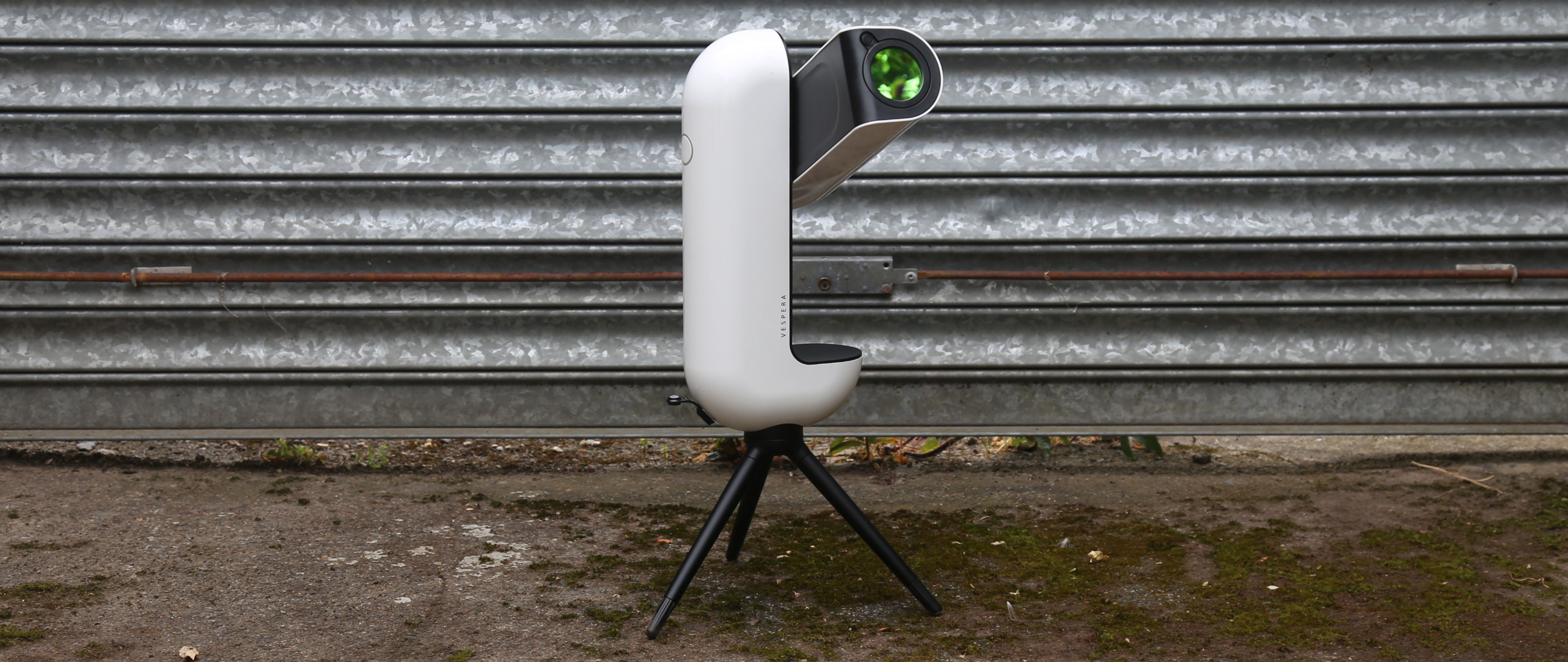Space Verdict
An easy-to-use and futuristic-looking robotic solution for beginners in light-polluted cities, the Vaonis Vespera Observation Station features impressive live image-stacking for galaxies and nebulae, but lacks resolution and can't image planets.
Pros
- +
Fully automatic operation from app
- +
Creates shareable images
- +
Easy to use
- +
Cuts through light pollution
Cons
- -
Very expensive
- -
Cannot observe planets
- -
Basic images of the moon
- -
Images lack sharpness and resolution
Why you can trust Space.com
The Vaonis Vespera telescope ($2499/£1982) is the smallest smart telescope yet — and it looks the part. A smaller, lighter and more affordable version of its robotic bigger sister the Vaonis Stellina from French startup Vanois, the long-awaited Vespera ('evening' in Latin) is technically a camera and not a telescope. It has no eyepiece and instead creates images of the night sky that it shares with up to five connected smartphones or tablets via an app called Singularity.
Using a camera and working brilliantly even in light-polluted cities, it's designed not for the moon and planets, but for the deep sky. Here's everything you need to know about the Vespera in action.
Vanois Vespera smart telescope: Design
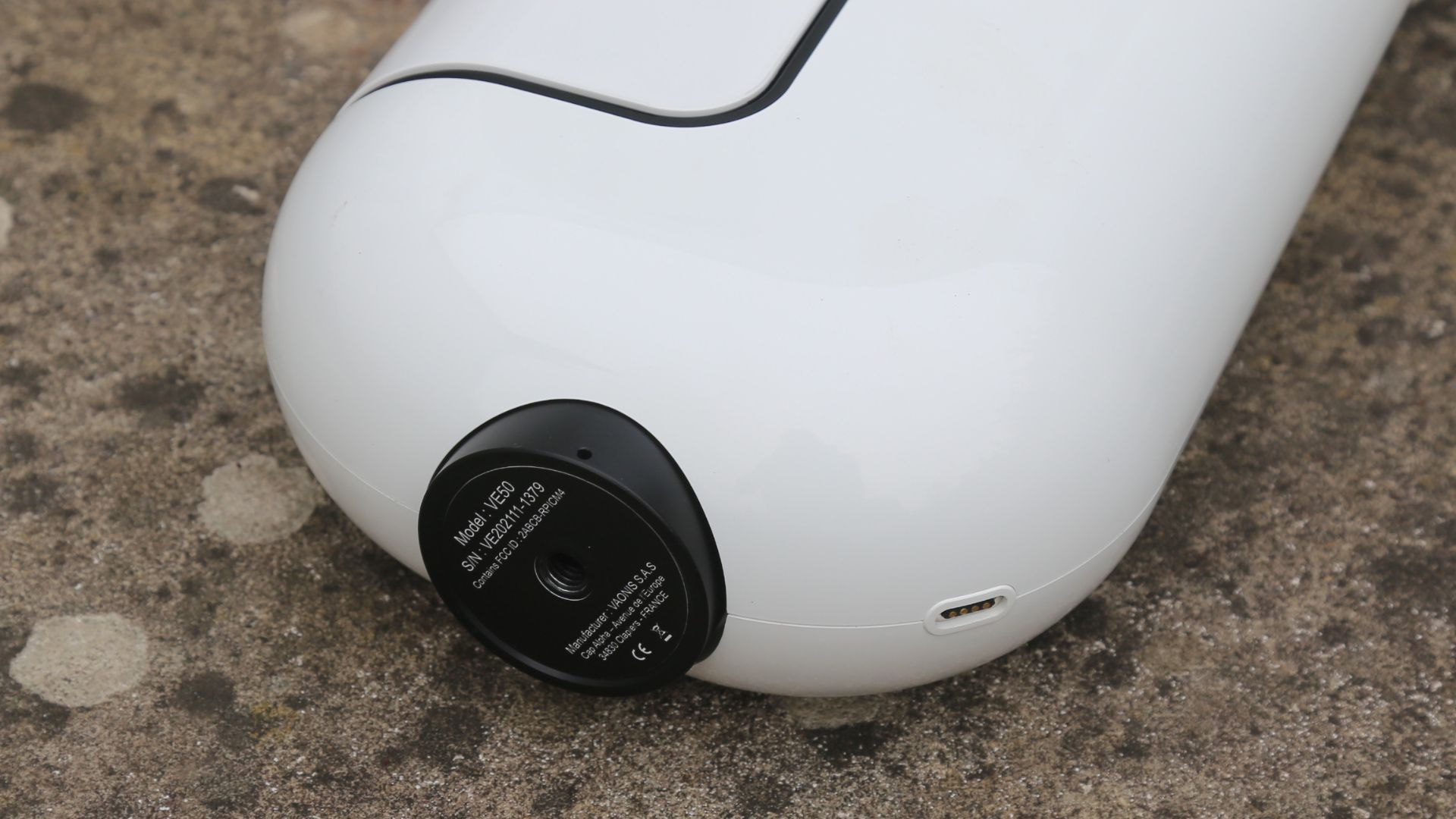
- Futuristic curvy design
- 15-inches / 40 cm tall
- Proprietary charging cable
A refractor with a small 50mm aperture — the same as many of the best binoculars for stargazing — the Vespera has an almost futuristic design and definitely looks like something you can pair with a smartphone.
Optical design: Apochromatic (APO) quadruplet refractor
Aperture: 2-inch/50 mm
Focal length: 8-inch/200 mm
Focal ratio: f/4
Field of view: 1.6 x 0.9 degrees
Sensor: 1/2.8-inch Sony IMX462
Water resistance: IP43
Battery size/life: 7,000mAh/4 hours
Total kit weight: 11 lbs. / 5 kg
Mount type: Altazimuth
A sleek, curved, ice-white device about the same size as a games console, the Vespera weighs just 10 lbs / 5 kg. Measuring 15-inches x 8-inches x 3.5-inches / 40 x 20 x 9 cm, it comes with a tiny tripod whose legs measure just 8-inches/20cm.
Physically there's not much to the Vespera and if you buy the optional backpack it's seriously portable. On one side is a motorized arm snuggled into the curved chassis, which comes to life when you fire up the Singularity app. On the other side is a centrally-located round button surrounded by LEDs, which light up red, green and blue depending on its status.
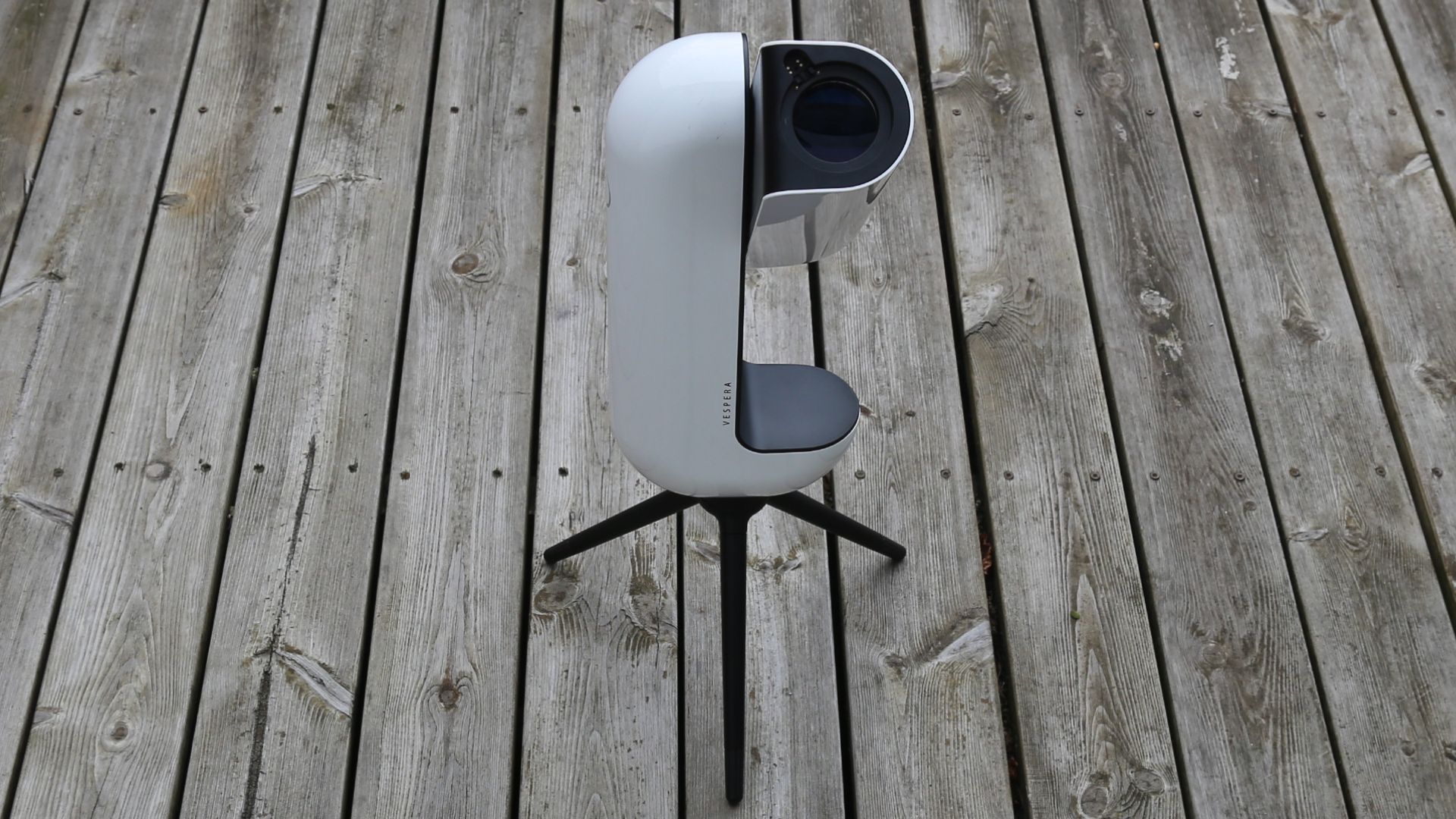
The Vaonis Vespera functions even better for astronomers who have the means to stretch to additional accessories. These pieces of add-on gear include: a light pollution filter ($199/£158), Hygrometer sensor ($99/£79), Solar filter ($99/£79), Dual-band filter ($399/£316), Backpack ($149/£118), and an Extendable full-size tripod ($149/£118) .
Vaonis Vespera smart telescope: Performance
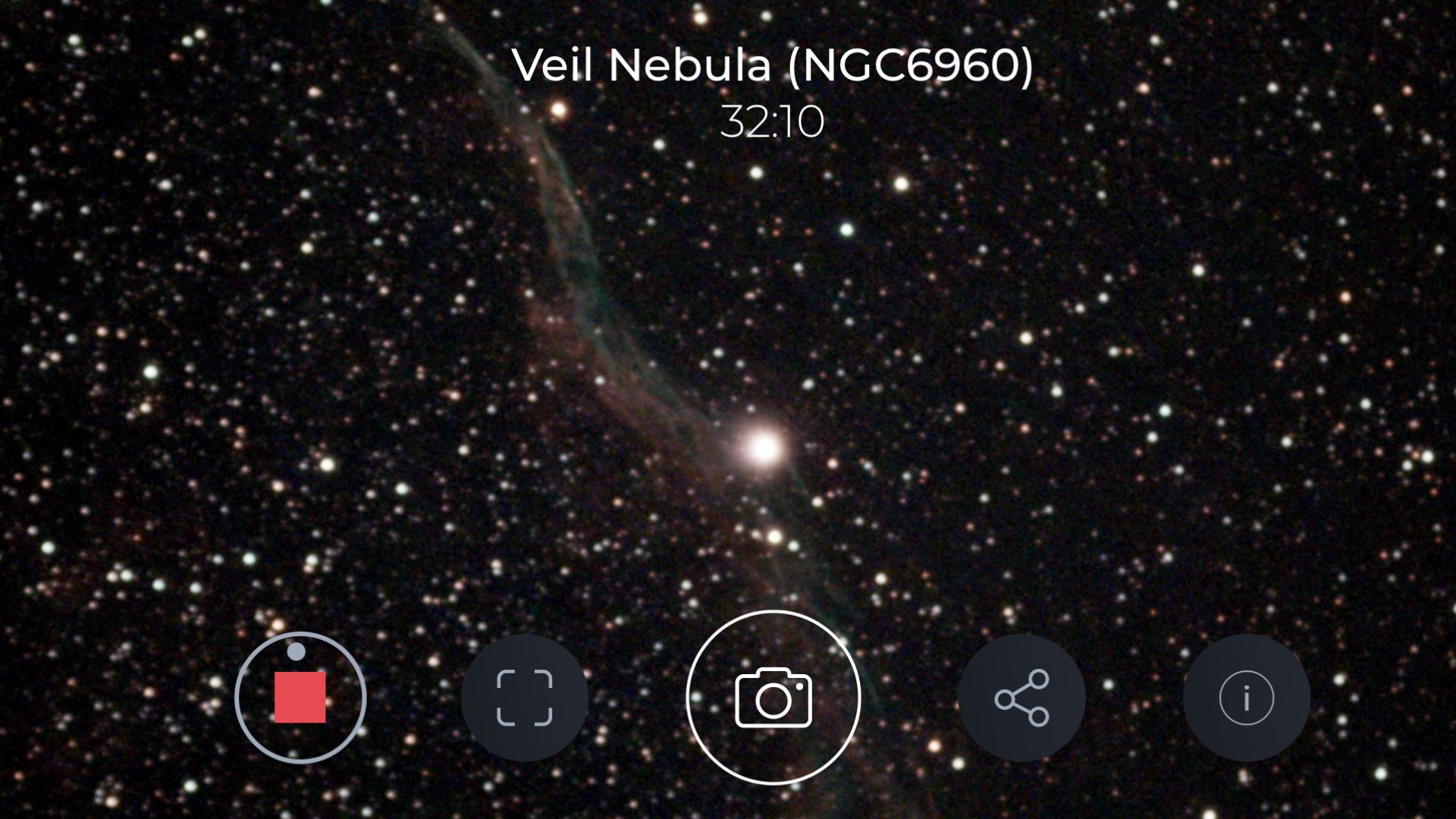
- 1920 x 1080 pixel images (2 megapixels)
- Copes well with light pollution
- Can't observe planets
- Limiting magnitude is 13
The Vespera is all about three slabs of impressive technology; star pattern recognition software, image live stacking technology and an excellent app. With a target in its crosshairs within five minutes of being switched on the Vespera's image sensor — a Sony IMX462 — takes image after image and stacks them one on top of another right before your eyes. You can watch this noise-canceling process live on the Singularity app as an ever-clearer, more contrasty and more colorful image of, say, a nebula, appears. It takes one photograph roughly every 10 seconds, though that changes according to what you're looking at. It's using a planetarium — as with any stargazing app — and producing a 'tonight's best' list of celestial targets. However, for each target, an algorithm is used to determine the camera settings.
Collapsible tripod
Bubble level clip
USB wall charger
USB-C magnetic charging cable
The app tells you how long you should let Vespera image a target, but you can decide for yourself. Star clusters often look great within a few seconds and don't get that much more detailed with repeated imaging. For galaxies, it's worth waiting a while (Andromeda's dust lanes are revealed after about 15 minutes) and for nebula, patience is rewarded (the Veil Nebula's definition and color wowed after about 30 minutes). However, you can save the image to the app, or to your camera's photo app, or online, whenever you want.
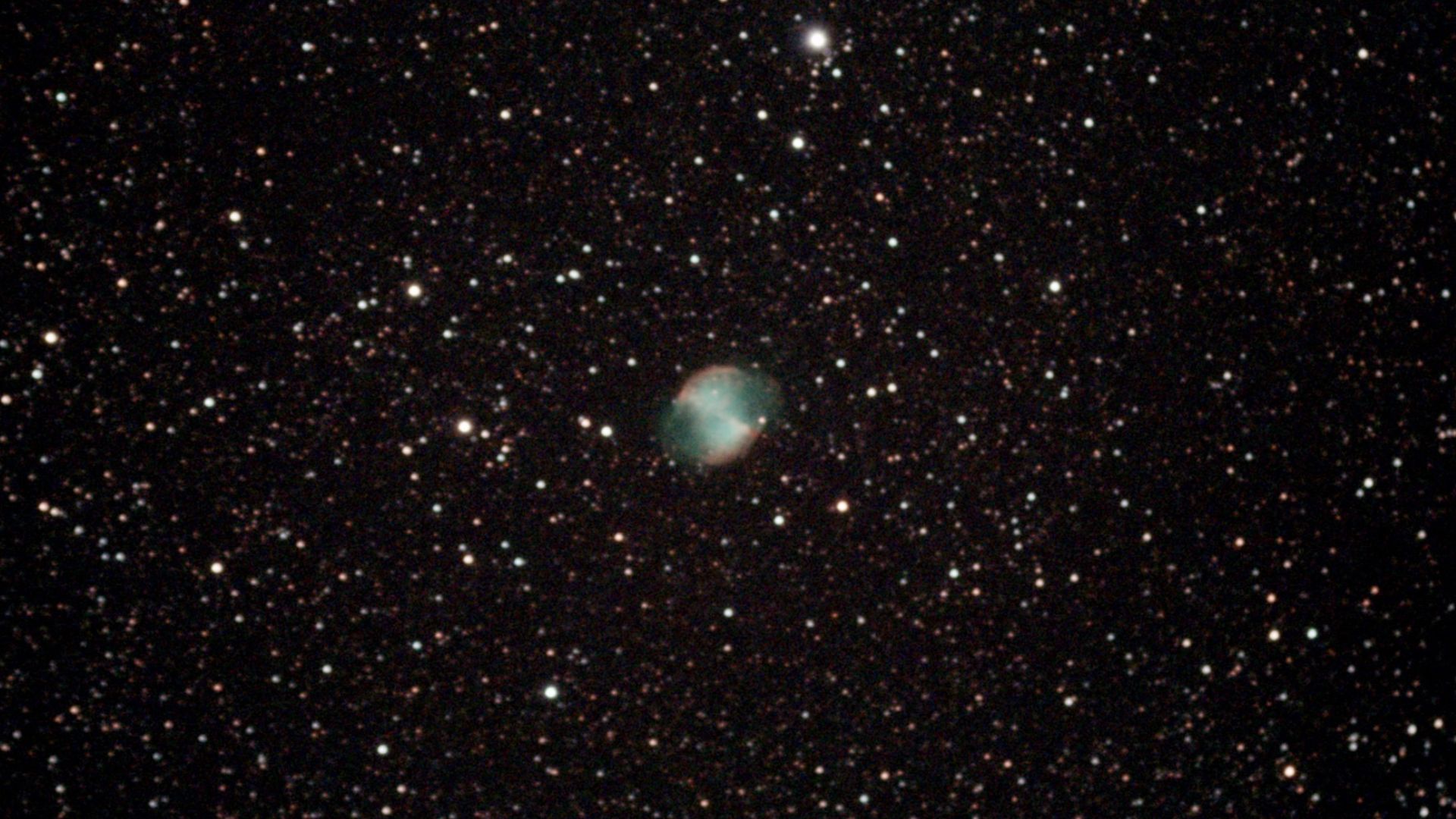
The Vespera's images are reasonably low resolution. Despite claims that they're 'ultra HD' they're actually a maximum of 1920x1080 pixels, which is just two megapixels. Ultra HD (UHD) as it’s commonly referred to, gives a resolution of 3840 x 2160 pixels. That 2 megapixel resolution is low compared to the Stellina's 3,072 x 2,080 pixels (6.4 megapixels). It limits how much it's possible to zoom-in on detail. The images are also rather soft.
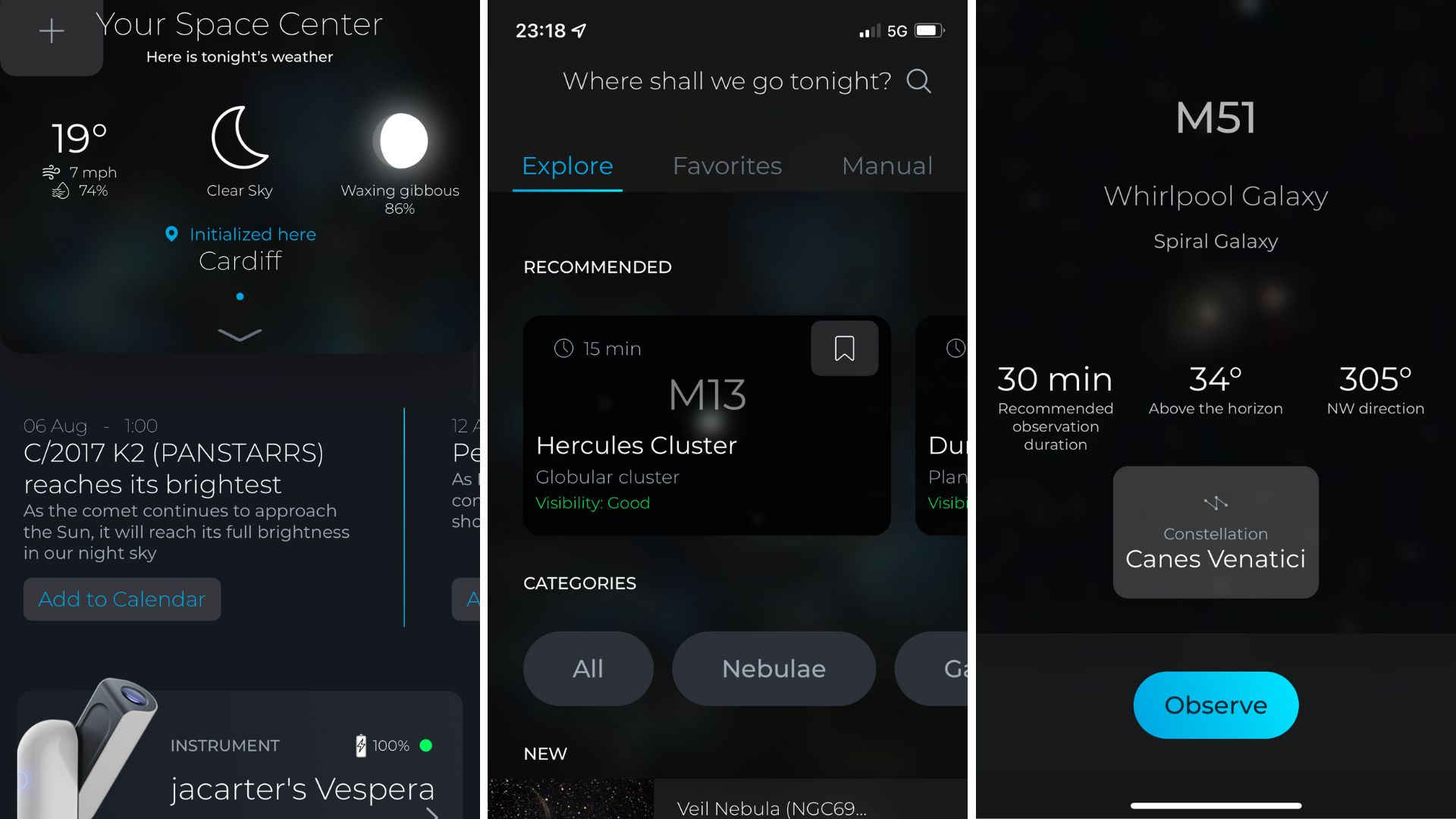
However, there are ways to increase the quality. Not only is it possible to extract lossless TIFF and FITS files for post-processing, but the 'adjust frame' mode lets the user take several images of the night sky for stitching together later. That's useful for the Andromeda galaxy, which is too big for the field of view of the Vespera. Vaonis call this 'mosaic mode'.
The Vespera got an update in 2023 that, for the first time, means it's also possible to safely image the Sun with the Vaonis Vespera, with the aid of a specialized solar filter that can be purchased separately.
First a warning: don’t attempt to image the Sun with the Vespera without the solar filter attached. The heat and glare of the Sun will damage your telescope’s optics and imaging sensors, and the Vespera is an expensive telescope to have to replace. And don’t try and look at the Sun yourself with your unaided eye, and certainly don’t try to look at it through any unfiltered instruments, otherwise, you could seriously damage your eyesight and risk blindness.
Once you’ve attached the solar filter to the Vespera’s endcap, you can enter ‘solar mode’ via the Singularity app. Unlike imaging the night-sky, where Vespera plate solves to find out where it is pointed, when in solar mode the Vespera instead looks for the brightest thing in the sky, which is undoubtedly going to be the Sun. We had trouble on the day with this. It was slightly hazy and cloudy, with the Sun dipping in and out from behind the clouds, and even though its disk could still be seen beside the haze, the Vespera had trouble locking onto it. This is possibly because the haze made the Sun’s light more diffuse, so that the Vespera couldn’t lock onto a specific point. We recommend engaging in solar mode when the sky is completely clear and blue - easier said than done in some parts of the world than others!
The solar filter is a hydrogen-alpha filter, meaning it only lets through the light emitted by ionized hydrogen (a wavelength of 656.28 nanometres). Fortunately, the Sun’s made of ionized hydrogen, so there’s plenty of hydrogen alpha light to view, and it gives the image an orange cast. Luckily at the moment, (September 2023) the Sun is approaching solar maximum next year, when it is at its most active. The Vespera and its solar filter can capture the entirety of the Sun’s disk in a single image, and depending on the activity at the time you image it, you will see sunspots, perhaps some arcing prominences, and if the seeing (atmospheric turbulence) is stable you should be able to make out solar granulation. This is a mottling effect caused by the Sun being covered in convection cells, each thousands of miles across.
All in all, the Vespera and its solar filter are an excellent, safe and easy way of keeping track of the Sun through its 11-year solar cycle of activity. Count the number of sunspots that you see each day — they are a direct measure of solar activity, with the most sunspots at solar maximum, and the least at solar minimum when you’ll get some days when there are no sunspots at all.
Vaonis Vespera smart telescope: Functionality
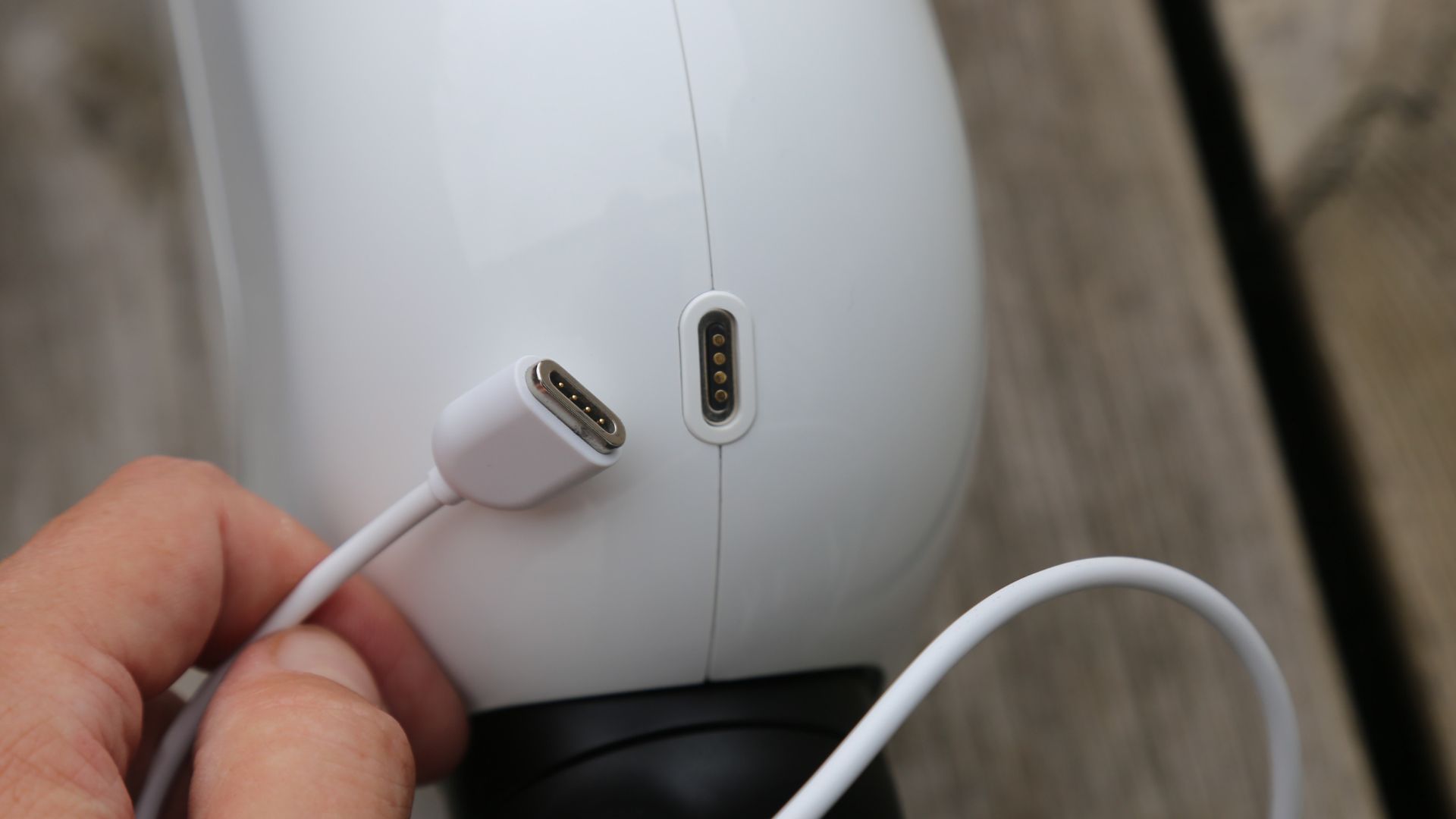
- Easy to set-up
- Excellent smartphone app
- Four hour battery life
It's ridiculously easy to set up and calibrate the Vespera. There's a YouTube video to help, but it's simply a case of placing it on the floor, opening the app and waiting about three minutes for the star pattern recognition software to work in conjunction with your smartphone's GPS to calibrate itself. It auto-tracks targets as Earth rotates and indulges in 'smart focus'.
The entire experience is built around the excellent Singularity app, which customizes its lots of recommended objects to observe based on its exact time and location. However, it's also possible to input coordinates if, say, you want to observe a passing comet or go 'off catalog'. It's also possible to manually change the image settings.
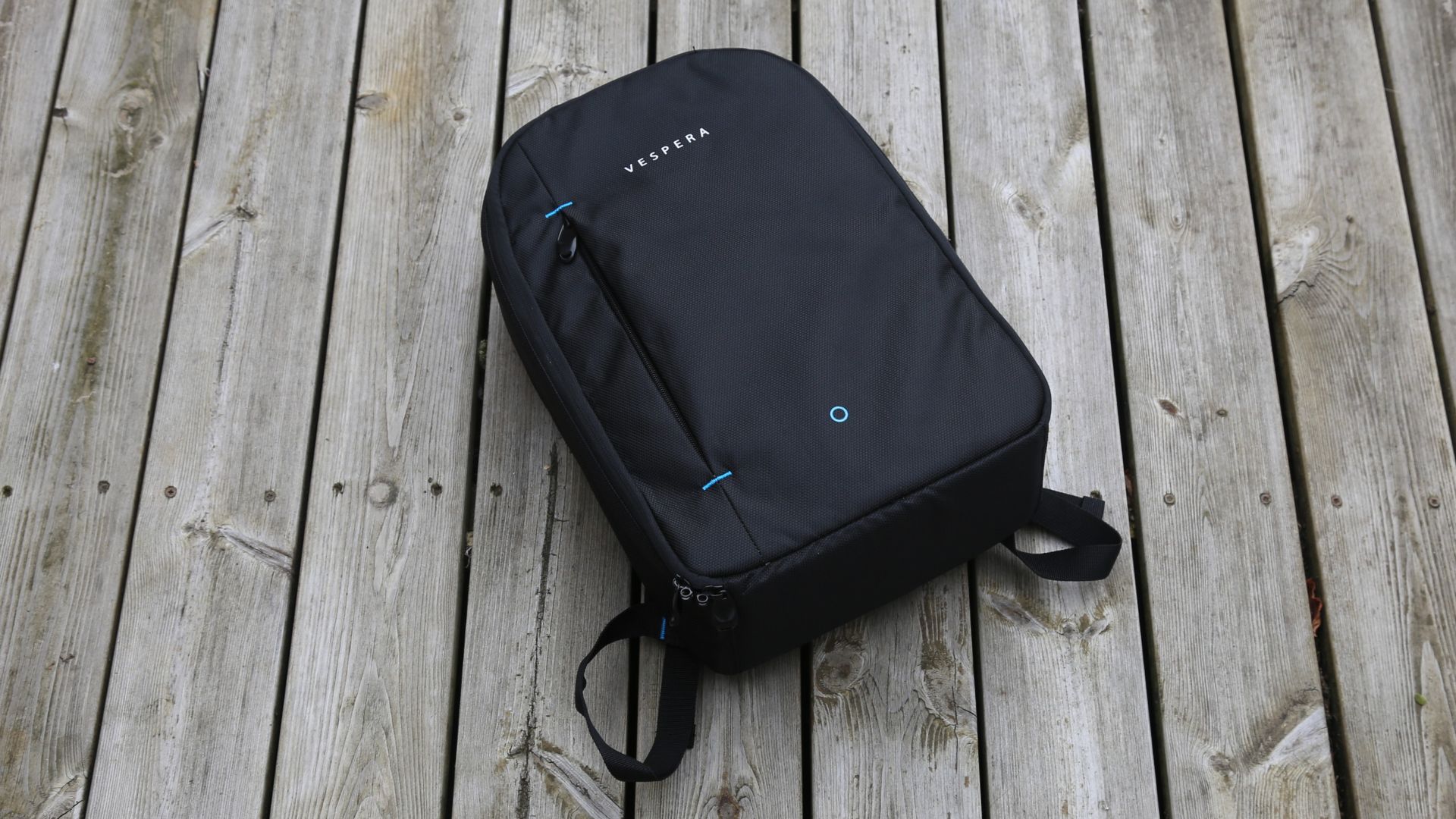
The 58-inch/140cm-long proprietary cable did cause me a few problems. It's magnetic so should clip-in relatively easily, though in practice it's not easy to use. As well as the slot being ranged slightly too low down to easily get eyes-on — especially in the dark — the cable connector has to be orientated a certain way to be attracted successfully. All of that is an important detail because the Vespera's 7,000 mAh battery lasts for only four hours, so the user is likely to need to attach the charging cable not only during an observation session, but during an actual observation. It's wise to keep a reasonably large portable battery nearby.
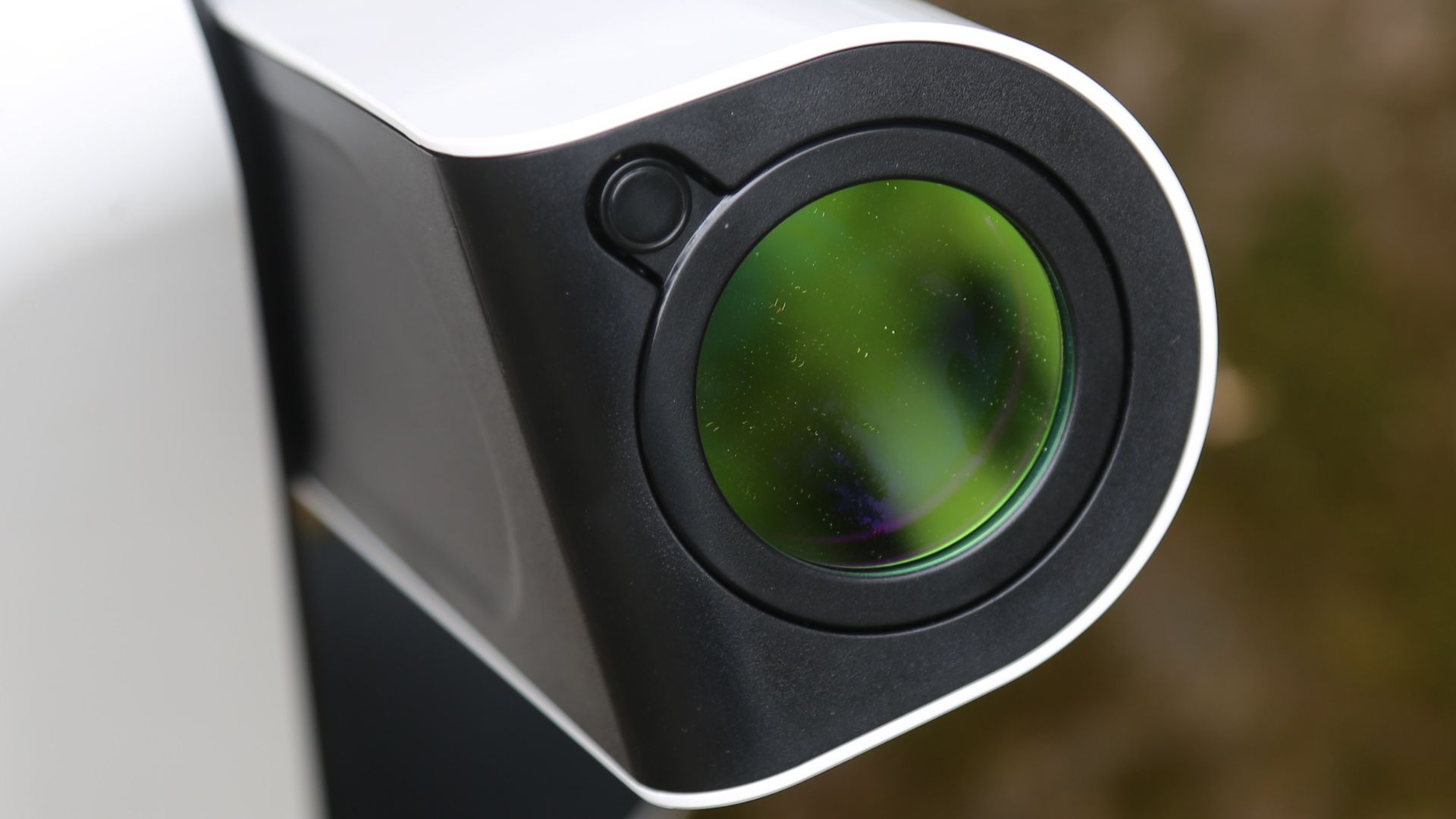
Should you buy the Vaonis Vespera Observation Station smart telescope?
The Vaonis Vespera is much easier to use than most beginner telescopes and it gets better results. Sure, you're not actually looking through an eyepiece — which may upset purists — but don't make the mistake of confusing the Vespera's live image stacking technology with a regular telescope or an astrophotography rig. It's neither.
A new and impressive, albeit very expensive, way of glimpsing deep-sky objects such as galaxies and nebulae even from a light-polluted city, it's easy to use, highly shareable and exceptionally travel-friendly. If you're a casual stargazer or amateur astronomer just starting out you'll love the Vaonis Vespera.
If the Vaonis Vespera Observation Station smart telescope isn't for you
If you want a smart telescope offering less portability, but more resolution and detail then head for the Vespera's bigger sister, the Vaonis Stellina, a 3.15-inch/80mm f/5 ED refractor with a slightly narrower field of view and 6.4-megapixel images.
Another similar option is the Unistellar eVscope 2, which creates 7.7-megapixel images. A much more affordable option is the Celestron StarSense Explorer 8-inch Dobsonian telescope, a manual 'push to' light bucket that comes with a smartphone app that helps you move it into position yourself.
Join our Space Forums to keep talking space on the latest missions, night sky and more! And if you have a news tip, correction or comment, let us know at: community@space.com.

Jamie is an experienced science, technology and travel journalist and stargazer who writes about exploring the night sky, solar and lunar eclipses, moon-gazing, astro-travel, astronomy and space exploration. He is the editor of WhenIsTheNextEclipse.com and author of A Stargazing Program For Beginners, and is a senior contributor at Forbes. His special skill is turning tech-babble into plain English.
